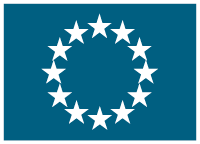Synthesis of Smart Virus-like Hierarchical Structures Based-on Polymer-Peptide Conjugates and the Potential Application in Drug Delivery
(SMARTSTRUCTURES)
Start date: Jul 1, 2012,
End date: Jun 30, 2014
PROJECT
FINISHED
"In this proposal, we intend to combine the advantages of virus and polymersome structural motifs into one integrated model as a promising strategy to construct hybrid structures that are efficient delivery vehicles. First, folic acid-modified polyN-(2-hydroxypropyl)methacrylamide-poly(L-cysteine) conjugate (FA-PHPMA-b-PLC) will be synthesized. The biocompatible PHPMA is used as the hydrophilic part, and PLC is chosen for its ability to aggregate in water (by either hydrogen or covalent bonding via beta-sheet formation or disulphide linkage). Not only do the thiol groups in PLC chain play an important role for covalent loading of drugs/proteins/genes via thiol exchange with disulfide groups, but also the oxidation of the cysteine residues to form intra- and intermolecular disulfide bridges further stabilize the polymersome structure. After forming the polymersome, the biomolecules will be incorporated by either covalent or noncovalent mechanisms. Finally, zinc oxide nanoparticles modified by disulfide-linked pyridine will be covalently encapsulated into the PLC shell to obtain the hybrid virus-like structure with ZnO nanoparticles as a key component of the coronal layer. We anticipate that the constructed hybrid structure will enter the target cell by endocytosis. The low pH in the endosome (pH~5) will then accelerate the dissolution of the ZnO nanoparticles and release the biomolecules. Subsequently, glutathione in the cytoplasm will reduce the cross-linked disulfides in PLC shell and lead to the disassembly of the polymersome. Therefore, as a new hybrid structure that integrates significant advantages of both the polymersome and virus models of biomolecule delivery, it is reasonable to believe that it will provide a new advance for the design of delivery vehicles for the cure of cancer-related diseases."
Get Access to the 1st Network for European Cooperation
Log In
or
Create an account
to see this content
Coordinator
UNIVERSITY OF BRISTOL
€ 209 033,40- Audrey Michael
- TYNDALL AVENUE SENATE HOUSE BS8 1TH BRISTOL (United Kingdom)
Details
- 100% € 209 033,40
-
 FP7-PEOPLE
FP7-PEOPLE
- Project on CORDIS Platform

